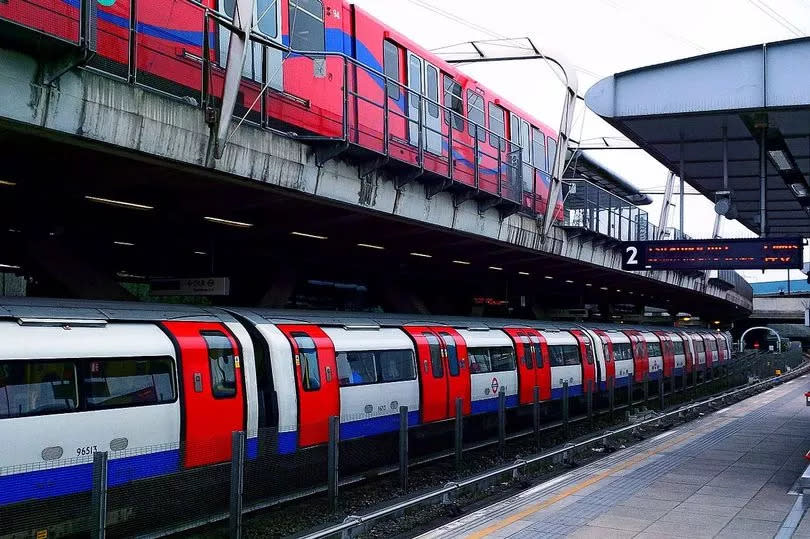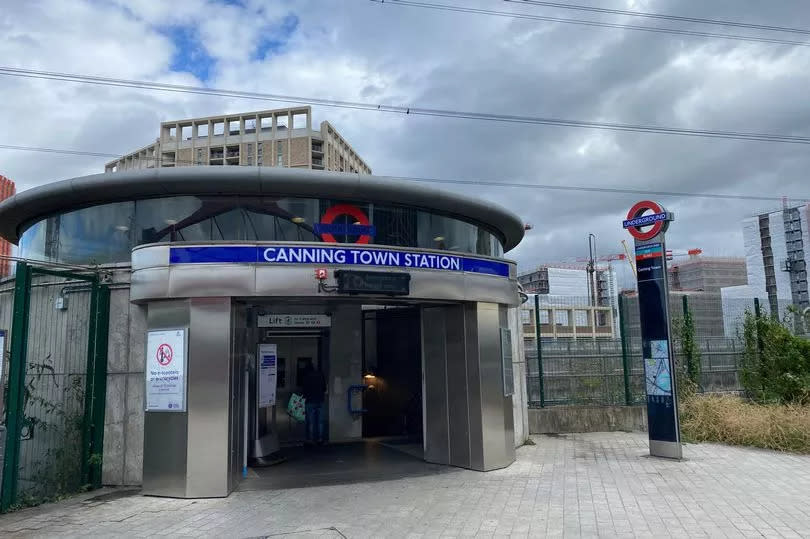The London Underground station where the platforms are stacked on top of each other to save space

If you find yourself on platform 2 at Canning Town station and glance west towards the opposite platforms, you'll witness the unusual sight of DLR trains arriving atop Tube trains below, as platforms 3 and 4 are stacked above 5 and 6.
While it's not uncommon to see platforms stacked on top of each other in the TfL network - St Paul's and Chancery Lane on the Central line being prime examples - this is the only instance where it's visible at street level.
This layout is both practical and cost-effective for TfL, allowing two railways to run on the alignment of just one, thus saving money on land acquisition.
READ MORE: The new Tube trains' 150-mile journey before they arrived in London
However, it has led to a rather inconvenient situation where southbound DLR trains heading towards Woolwich Arsenal and Beckton can depart from either the "downstairs" platforms 1/2 or the "upstairs" platform 3.

To switch between them, passengers have to use a subway that takes them down to an additional basement level. Essentially, they have to descend one floor, cross the station, then ascend two floors if they choose the 'wrong' platform to catch the next train.
This setup can cause chaos when a train is diverted, cancelled or full, resulting in a near-stampede of passengers rushing through the station to catch the next train from the other platform - far from ideal.
Extra signage in the station aims to help avoid this scenario, and several plasma screens display the platforms and destinations of the next DLR departures. It's worth noting that all London Underground Jubilee line trains always use platforms 5 and 6.
Canning Town station, originally a simple National Rail stop with just two platforms, was used by trains travelling between North Woolwich and Richmond via Stratford. This route is now split between the London Overground and DLR.
However, in the 1990s, the station underwent significant changes with the arrival of both the DLR and Jubilee line extensions, transforming it into an interchange station.
The DLR needed to cross the National Rail line, leading to the opening of a viaduct in 1994. This allowed trains to stop at elevated platforms above the future Jubilee line before making the crossing, eliminating the need for additional bridges or tunnels.
In 2006, the National Rail service was reduced to Stratford to facilitate its conversion to DLR. This involved modifying platforms 1 and 2 and the existing DLR viaduct.
The project was completed in 2011, partly funded by the 2012 Olympic Games, and since then, trains have been running between Stratford International and Woolwich Arsenal via Canning Town. This also allows for a shuttle service to operate between Canning Town and Beckton, reversing in platform 2.
"Stacked" platforms might be a rarity, but there are similar examples in underground systems worldwide. For instance, Paris's Mirabeau station on Metro line 10 has a unique setup with only one platform for eastbound trains.
This forces westbound trains to bypass the station, climbing a ramp to go 'above them', all visible to passengers. Also in Paris, an unusual viaduct carries Metro line 5 trains above the ticket hall/mainline station platforms at Austerlitz station.
Our London Underground newsletter brings you the latest travel updates to help you survive your commute - as well as a weekly dose of Tube trivia! You can sign up HERE.

 Yahoo News
Yahoo News 
